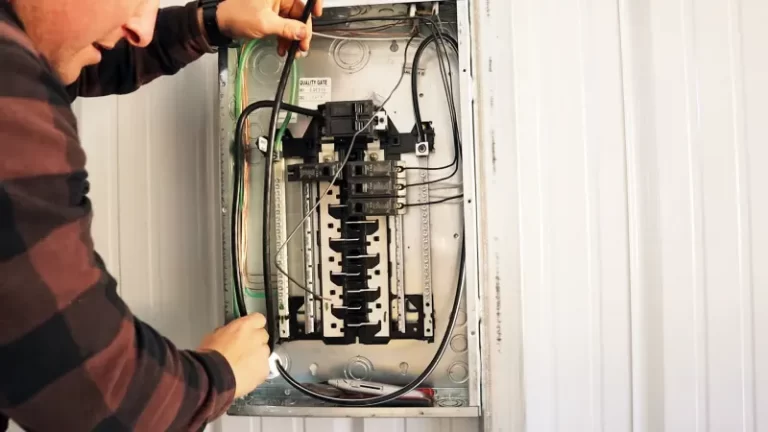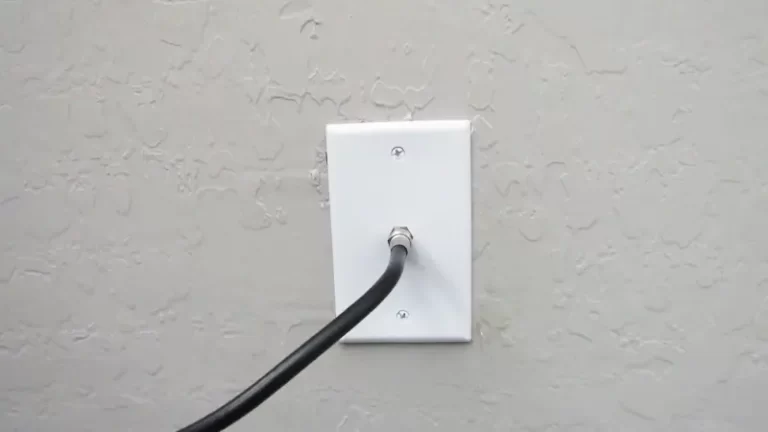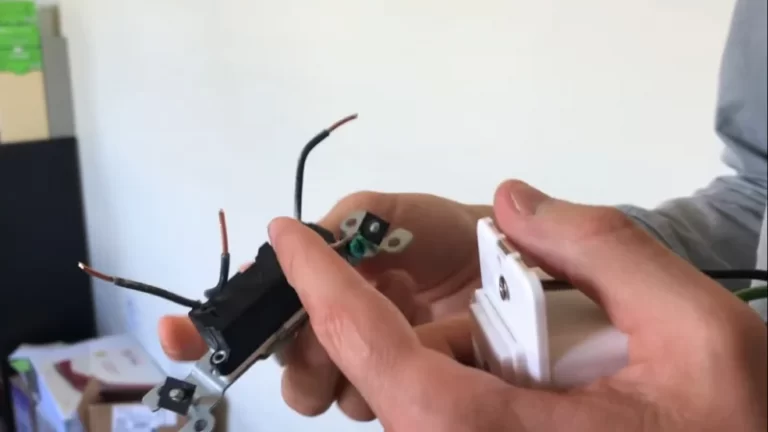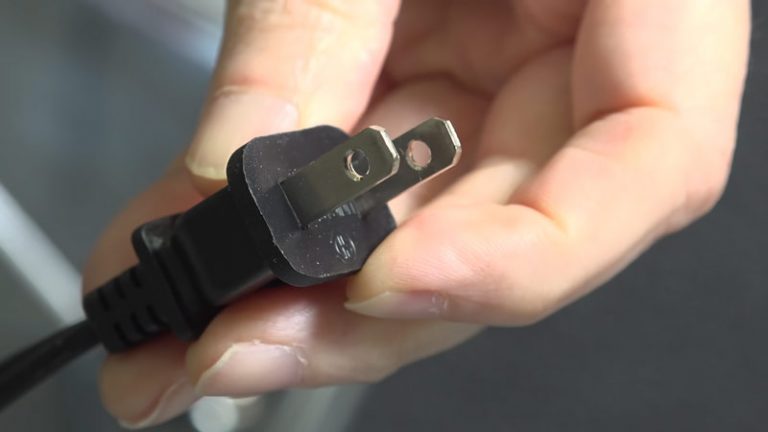Is It Legal To Splice Romex In A Wall

If you’re not fully installed, NEC expects you to use a proper junction/outlet box. The splice can later be accessed if needed – so make sure it’s properly done the first time around.
Be sure to have all your materials ready before beginning installation. There is no turning back now. Check for local codes and regulations before starting work. Mistakes during the installation could lead to costly repairs down the road.
You'll Learn About
Is It Legal To Splice Romex In A Wall?
Make sure your home is fully installed before you start working. There could be drywall still to be done and no outlet boxes yet in place. NEC expects you to use a proper junction/outlet box when wiring for the first time. Make sure you know what one looks like.
If something goes wrong with the installation, don’t worry. The splice can later be accessed if needed. Finally, remember that once everything’s been wired up and tested, it’s important to seal any gaps or cracks around doors and windows.
You’re Not Fully Installed
When you’re wiring a new home, make sure to consult an electrician or certified contractor. Splicing Romex is not allowed by code in most cases. It’s important to be aware of the risks associated with this type of installation.
You may have heard rumors that splicing Romex can create safety hazards. Always consult your local building codes before starting any project. If you disregard these warnings and get caught, you could face hefty fines and even jail time.
Always use caution when working with electrical wires. There are many dangerous scenarios that can occur without warning.
There Is No Drywall Yet Installed
You should always consult with a licensed contractor before beginning any work. It is illegal to splice Romex in a wall without the proper permits and licenses.
The protection of your home depends on adhering to the regulations set by your municipality or county governing building codes. If you are unsure about whether or not it’s safe to make the modifications, please contact a professional for help.
Always be vigilant when working around electrical wiring. Take appropriate safety precautions at all times.
NEC Expects You To Use A Proper Junction/Outlet Box
Splicing Romex in a wall is not recommended. It can create electrical hazards and lead to problems down the line. You should use proper junction/outlet boxes when splicing Romex wires together. This will help you avoid any trouble.
Make sure your walls are properly framed before installing Romex wire. If they’re not, sparks may fly. If you do decide to go ahead with splicing Romex on your wall, be sure to consult an experienced electrician for help. Always use caution when working with electricity, and keep yourself safe by following all safety guidelines outlined by the National Electrical Code (NEC).
The Splice Can Later Be Accessed
In order to wire a light switch or receptacle in a wall, it is legal to splice Romex together using an electrician’s tape measure and screwdriver. It is important to be aware of the code requirements for your municipality when wiring in new electrical components.
If you need help with estimating how much wire you’ll need, consult an electrician before starting the job. Once the wires are attached, use screws and washers to secure them into place. This will prevent them from pulling out during use or weather conditions. After completing this project, make sure to test all functions of your newly wired devices.
Can You Splice Romex Inside A Wall?
As long as the Romex is properly insulated, you can splice it inside a wall. However, be sure to use an approved method and make sure that the Romex isn’t exposed to moisture or other elements.
You Can’t Splice It In The Wall
Romex is a type of wire used in electrical wiring. Because it’s made out of plastic, Romex isn’t as strong as other types of wire. It can be easily pulled apart by hand if not installed correctly. To prevent this issue, back pull the Romex before replacing it with another piece of wire.
Back Pulling Is Required To Replace A Romex Section
To replace a broken or damaged section of Romex, you will need to use junction boxes. This is instead of trying to splice the wires directly inside the wall. Junction boxes are specially designed boxes that allow for easy routing and connection between different wires and components inside your home or office building.
Use Junction Boxes When Splicing
When connecting two pieces of wire using junction boxes, make sure that each box has both male (or U-shaped) connectors on one side and female (or J-shaped) connectors on the other side. This way, you won’t have any trouble connecting or disconnecting them later on. It also prevents damaging your walls or wiring system.
Is It OK To Splice Romex?
There are a few things to keep in mind if you’re thinking about splicing Romex wire:
- First, make sure the wires are of equal gauge. This means they have the same thickness throughout.
- Second, use electrical tape on both ends of the Romex wire before connecting it together. Finally, always wear safety gear when working with electricity.
- Splicing Romex wires of different gauges is not safe. When wiring two pieces of Romex together, always use an approved contractor or professional electrician.
- Wire gauge affects the voltage and current that can flow through a cable. Mismatched gauges could create hazards. In particular, a mismatch in voltage – which may occur when using different types of wire – can cause sparks and fires when connected to live electrical circuits.
- Always wear gloves when working with electricity. Follow all safety guidelines when wiring up your home or business installation. Failure to do so could result in serious injury or even death if something goes wrong while you’re working on site.
- Make sure that the length of each piece of Romex is consistent before connecting them together. Otherwise, you run the risk of creating shorts across your circuit board (and potential damage).
- And lastly, double-check both ends are properly sealed before plugging them into an outlet. After all, no one wants their new home entertainment system failing due to a loose power cord.
Is It Against Code To Splice Wires?
Splicing wires is not always against the code, but it can depend on your area and municipality. Generally speaking, if you are a licensed electrician or have the proper permits, you may be allowed to splice wires without having to go through a formal building inspection.
However, make sure that you consult with your local authorities before beginning any electrical work. This will help you avoid any potential issues.
Splices are a common way to connect wires together. They can be used in many different places and applications, but there are some restrictions that must be followed when splicing wires.
- First, the splice must be made in a junction box. This is typically located near electrical equipment or other sensitive areas.
- Second, all of the wire connections should be properly tracked. This ensures they cannot fail later on.
- Finally, no loose wire connection should occur. This could lead to shorts and potential damage to your vehicle’s system.
Can I Splice Electrical Wire In A Wall?
Always use an approved junction box or fixture electrical box when making a splice in the wall. Use proper wire size and insulation to avoid short circuits and sparks.
Make sure the wall is properly dry before attaching wires. Wet walls can create dangerous conditions for electricians.
Protect your hands and eyes by wearing gloves and eye protection while working on the project. Check for potential danger sources that may create sparks, such as frayed wiring, damaged wires, or exposed screws.
Are In-Wall Splices Legal?
In-wall splices are legal as long as the junction/outlet box is used properly. Splices can be installed in a wall without any problems.
You must use a proper junction/outlet box. The right box will ensure that your wiring stays organized and safe while you’re working on the wall.
The splice can be fished later. If something goes wrong later on down the line, you’ll have plenty of time to fix it without having to tear apart your entire home’s electrical system.
Can You Splice Residential Wiring?
Make sure the wires you are using are of the same size before starting to splice them together. Strip 1/4″ of insulation off both ends of each wire and then twist one end around another end.
Next, twist the second end around the first and tuck it away behind all exposed wires with electrical tape for extra security. Once everything is secure, tug on wires to make sure they’re tight and cover any exposed ends with additional tape if desired.
Can You Put A Junction Box Inside A Wall?
It’s a safety hazard to put a junction box inside a wall. It can cause electrical problems and you may not be able to access equipment if there is a problem.
Junction boxes are best placed in open areas. This makes them easy to see and avoids tripping hazards.
Keep in mind that junction boxes may affect the way your home’s wiring functions. Make sure you consult with an electrician before installing one.
If placed within the walls isn’t an option, try placing them near electrical equipment or cables. This provides added protection.
To Recap
There is no definitive answer to this question as it depends on the jurisdiction in which you reside. Generally, however, it is illegal to splice Romex (a type of electrical cable) in a wall without the proper permits and licenses.
Splicing Romex (non-metallic sheathed cable) inside a wall is generally not recommended unless the splice is made inside an accessible junction box. Electrical codes require that all splices be accessible for inspection and maintenance, which means burying a splice in a wall without a junction box is against code. Always consult local regulations and consider hiring a licensed electrician for such tasks.
If you’re working on electrical projects, it’s worth exploring why Mastertech air conditioners are a good brand for energy-efficient cooling. Additionally, understanding what E5 means on a Hisense air conditioner can help you troubleshoot HVAC issues.





